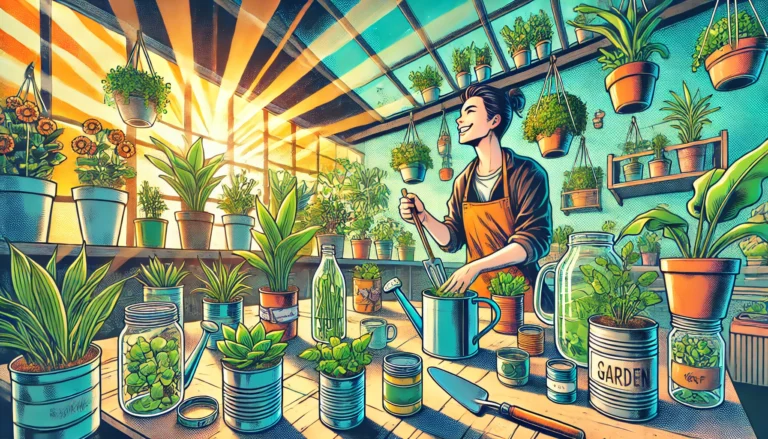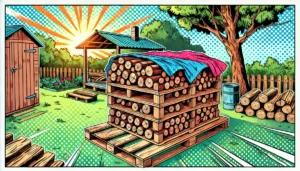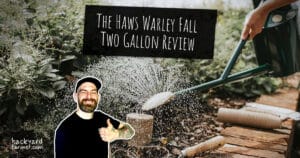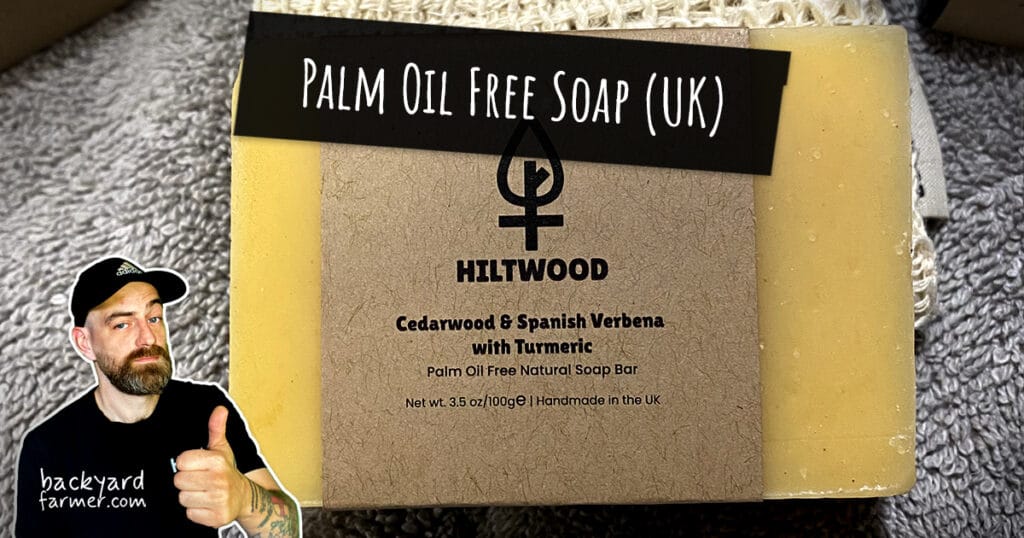Table of contents
Introduction
As someone who’s always had more plants than square footage, I’ve mastered the art of affordable indoor gardening. Whether you’re looking to save money or just love the idea of bringing the outdoors in, I’m here to show you how to do affordable indoor gardening sustainably—no green thumb required!
Indoor gardening is a fantastic way to bring nature inside your home, but it can sometimes feel like an expensive hobby. Fortunately, with a little creativity and some savvy strategies, you can create a beautiful, thriving indoor garden without spending a fortune.
In this guide, we’ll explore various ways to make indoor gardening affordable, from choosing the right plants to utilizing cost-effective tools and DIY solutions.
Getting Started: Affordable Essentials for Indoor Gardening
Starting an affordable indoor gardening setup doesn’t mean you have to compromise on quality or success. Affordable indoor gardening is achievable with the right tools and strategies, allowing you to create a thriving green space without overspending. Here’s how to get started with affordable essentials:
Essential Tools for Indoor Gardening
To ensure your indoor garden thrives, you’ll need a set of essential tools. While it might be tempting to purchase every gardening gadget available, starting with these basics will suffice for most indoor gardening needs:
- Hand Trowel: A hand trowel is indispensable for planting, transplanting, and digging small holes in pots. Choose one with a comfortable grip and durable material to ensure it lasts. In the UK, hand trowels can be found at garden centres like B&Q or Wilko, with prices ranging from £3 to £7.
- Pruning Shears: Pruning shears are crucial for maintaining plant health by allowing you to trim dead or overgrown leaves and stems. Look for a pair with sharp blades and ergonomic handles. Affordable options are available at stores like Homebase or online retailers like Amazon for around £5 to £10.
- Watering Can: A small watering can with a long spout helps you water plants evenly and reach tricky spots without spilling. While many options are available, you can also repurpose a household container with a spout, like a kettle or jug. Basic watering cans are priced between £3 and £8 at most discount stores or garden centres.
- Plant Pots: Choosing the right pots is vital for your plants’ growth. Pots with drainage holes are ideal for most plants to prevent waterlogging. You can find inexpensive options at charity shops, Poundland, or even by upcycling items like old mugs or jars. Plant pots typically cost between £1 and £5 each, depending on size and material.
Budget-Friendly Tools
| Tool | Purpose | Average Cost | Where to Buy |
|---|---|---|---|
| Hand Trowel | Planting, transplanting, digging | £3 – £7 | Wilko, Homebase, Garden centres |
| Pruning Shears | Trimming plants, removing dead leaves | £5 – £10 | Amazon UK, B&Q, Garden centres |
| Watering Can | Watering plants without soil disturbance | £3 – £8 | Poundland, B&M, Wilko |
| Plant Pots with Drainage | Prevents waterlogging in pots | £1 – £5 each | Charity shops, Discount stores, Sales |
DIY and Upcycling: Cost-Effective Gardening Solutions
One of the best ways to keep your indoor gardening budget-friendly is by getting creative with DIY and upcycling solutions. This approach not only saves money but also allows you to personalize your gardening space with unique, eco-friendly items.
- Upcycling Household Items: Everyday items can easily be transformed into useful gardening tools or containers. For instance, old spoons can serve as makeshift trowels, while empty jars or plastic bottles can become watering cans or self-watering planters. This reduces waste and adds a personal touch to your garden.
- Creating DIY Planters: Get creative with planters by using items like tin cans, teapots, or even old boots as containers. Simply drill a few drainage holes in the bottom, and you’ve got a quirky, budget-friendly planter. You can also decorate these items with paint or fabric to match your home decor.
- Building Your Own Tools: If you’re handy with basic tools, consider making your own gardening equipment. A simple wooden dibber for planting seeds can be carved from a piece of scrap wood. This approach is cost-effective and gives you the satisfaction of using tools you’ve crafted yourself.
- Repurposing Containers: Beyond standard pots, various household items can serve as plant containers. For example, yogurt pots can become seed starters, and old teacups can host small succulents. Ensure that each container has adequate drainage by adding holes at the bottom or layering stones underneath the soil.
- DIY Hanging Planters: If you’re short on space, consider making your own hanging planters. You can use materials like macrame cord, rope, or even old t-shirts to create hanging baskets. These are perfect for trailing plants like ivy or ferns and add a vertical dimension to your indoor garden.
Upcycling Old Containers and Jars
| Household Item | Suggested Plants | Special Considerations |
|---|---|---|
| Mason Jars | Herbs, Succulents | Add a layer of stones for drainage |
| Tin Cans | Small Flowers, Herbs | Drill drainage holes at the bottom |
| Teacups and Mugs | Succulents, Small Houseplants | Ensure proper drainage, use stones if necessary |
Where to Buy: Finding Affordable Gardening Tools and Materials
Sourcing affordable indoor gardening tools and materials is key to keeping your indoor garden budget-friendly. Here’s where you can find great deals:
- Charity Shops and Car Boot Sales: These are treasure troves for second-hand gardening tools and pots. You might find high-quality items at a fraction of the retail price. Charity shops like Oxfam or British Heart Foundation often have gardening sections, especially during the spring and summer months.
- Pound Stores: Stores like Poundland offer a variety of basic gardening tools and supplies, such as hand trowels, gloves, and plant pots, all at very low prices. These are perfect for beginners or anyone looking to start small.
- Online Marketplaces: Websites like Gumtree, eBay, and Facebook Marketplace frequently feature used gardening tools. You can often find bulk deals or items being sold by individuals who no longer need them, sometimes at heavily discounted prices or even for free.
- Garden Centre Clearance Sales: Many garden centres, such as B&Q and Homebase, have clearance sections where you can find discounted tools, pots, and other supplies. These are often end-of-season items or slightly damaged goods that are still perfectly usable.
Where to Find Discounts and Deals
| Source | What to Look For | Savings Potential |
|---|---|---|
| Seasonal Sales | Tools, pots, accessories | Up to 50% off |
| Pound Stores & Discount Retailers | Basic gardening tools, gloves, pots | £1 – £5 per item |
| Online Marketplaces | Second-hand tools, pots, equipment | 30% – 70% off retail price |
| Charity Shops & Car Boot Sales | Various gardening tools, pots | £1 – £10 |
Cost-Effective Soil and Fertilizer Options
Ensuring that your plants get the right nutrients is essential for a thriving indoor garden. Fortunately, you don’t have to spend a lot on soil and fertilizers. By choosing affordable options and making the most of what you already have, you can keep your garden healthy and vibrant on a budget. Here’s how:
Affordable Soil Mixtures for Different Plant Types
The type of soil you use can make a big difference in the health of your plants. While specialty soils can be expensive, there are cost-effective alternatives that work just as well for different types of plants:
- Multipurpose Compost: Multipurpose compost is a versatile and budget-friendly option that suits most indoor plants. Available at garden centres like B&Q and Wilko, it typically costs between £4 and £8 per bag. This compost is suitable for general use, including houseplants, herbs, and vegetables.
- Peat-Free Compost: For those looking to make an environmentally friendly choice, peat-free compost is a great option. It’s widely available and priced similarly to traditional composts, typically costing around £5 to £10 per bag. Peat-free compost is ideal for a wide range of plants and is recommended for its sustainability.
- Specialty Soil Mixes: For specific plant types like cacti, succulents, or orchids, you might need a more specialized soil mix. These can be made more affordable by blending a basic multipurpose compost with perlite or sand to improve drainage. You can also find these mixes in stores like Homebase, with prices ranging from £6 to £12 depending on the blend.
Affordable Soil Mixtures for Different Plant Types
| Soil Type | Suitable For | Average Cost | Where to Buy |
|---|---|---|---|
| Multipurpose Compost | General houseplants, herbs, vegetables | £4 – £8 per bag | B&Q, Wilko, Homebase |
| Peat-Free Compost | Environmentally conscious gardeners | £5 – £10 per bag | Garden centres, B&Q, Online retailers |
| Specialty Soil Mixes | Cacti, succulents, orchids | £6 – £12 per bag | Homebase, Garden centres |
Homemade Compost and Natural Fertilizers
One of the most cost-effective ways to nourish your plants is by making your own compost and natural fertilizers. These options not only save money but also reduce waste and are better for the environment:
- Homemade Compost: Composting at home is an excellent way to recycle kitchen scraps and garden waste into nutrient-rich soil for your plants. You can compost items like vegetable peelings, coffee grounds, eggshells, and shredded newspaper. To start, you can use a small compost bin or even a large container with a lid. Place it in a corner of your garden or balcony, and over time, your organic waste will break down into compost that can be mixed with soil.
- Banana Peel Fertilizer: Banana peels are rich in potassium, which is essential for plant health. You can create a simple banana peel fertilizer by chopping up the peels and burying them in the soil around your plants, or by soaking the peels in water for a few days and using the water to nourish your plants.
- Eggshell Fertilizer: Crushed eggshells are an excellent source of calcium for plants. Dry the shells, crush them into a fine powder, and sprinkle them on the soil. This is particularly beneficial for plants like tomatoes and peppers, which need extra calcium to prevent blossom end rot.
- Compost Tea: Compost tea is a liquid fertilizer made by steeping compost in water for a few days. It’s a powerful, nutrient-rich solution that can be used to water plants, giving them an extra boost. To make it, simply place a handful of compost in a bucket of water, let it sit for a few days, and then strain the liquid into a watering can.
Homemade Compost and Natural Fertilizers
| Fertilizer | Nutrients Provided | How to Make/Use |
|---|---|---|
| Homemade Compost | Nitrogen, phosphorus, potassium | Compost kitchen scraps in a bin or container |
| Banana Peel Fertilizer | Potassium | Bury chopped peels in soil or soak in water |
| Eggshell Fertilizer | Calcium | Crush dried eggshells and sprinkle on soil |
| Compost Tea | Nutrient-rich liquid | Steep compost in water for a few days, then water plants |
How to Reuse and Refresh Old Soil
Rather than buying new soil every season, you can save money by reusing and refreshing old soil. This not only reduces waste but also ensures that your plants continue to thrive:
- Removing Old Roots and Debris: Before reusing old soil, remove any remaining roots, stems, or debris from previous plants. This helps prevent diseases and ensures that your new plants have a clean environment to grow in.
- Mixing in Fresh Compost: To refresh the soil, mix in some homemade or store-bought compost. This adds essential nutrients back into the soil, making it fertile and ready for new plants. A good rule of thumb is to mix in about 25% fresh compost with your old soil.
- Adding Perlite or Sand for Drainage: Over time, soil can become compacted, reducing its ability to drain properly. Adding a handful of perlite or sand can help improve drainage and aeration, which is crucial for healthy root growth.
- Sterilizing Soil (Optional): If you’re concerned about pests or diseases, you can sterilize the soil by baking it in the oven at 180°C for 30 minutes. This kills any harmful pathogens but should be done with caution, as it can also destroy beneficial microbes.
How to Reuse and Refresh Old Soil
| Step | Purpose | Instructions |
|---|---|---|
| Remove Old Roots and Debris | Clean soil, prevent disease | Pull out old roots, stems, and debris |
| Mix in Fresh Compost | Replenish nutrients | Add 25% compost to old soil and mix well |
| Add Perlite or Sand | Improve drainage and aeration | Mix in a handful of perlite or sand |
| Sterilize Soil (Optional) | Eliminate pests and pathogens | Bake soil at 180°C for 30 minutes (optional) |
Maximizing Light on a Budget
Light is one of the most important factors in maintaining a healthy indoor garden, but investing in expensive grow lights isn’t always necessary. By exploring budget-friendly lighting options, making the most of natural light, and using DIY hacks, you can ensure your plants get the light they need without overspending. Here’s how:
Budget-Friendly Lighting Options for Indoor Plants
If your indoor space doesn’t get enough natural light, or if you’re growing plants that require more light than what’s available, budget-friendly lighting options can help fill the gap. Here are some affordable alternatives to expensive grow lights:
- LED Bulbs: LED bulbs are an energy-efficient and cost-effective solution for supplementing natural light. They are available in various spectrums, with some specifically designed for plant growth. You can find LED grow bulbs online or at stores like B&Q or Wilko, with prices starting from as low as £5 to £15 per bulb.
- Fluorescent Lights: Compact fluorescent lights (CFLs) are another affordable option for indoor gardening. These lights are efficient and produce the kind of cool white light that is beneficial for plant growth. You can pick up CFL bulbs for around £3 to £10 each at most hardware stores or supermarkets.
- Clip-On Desk Lamps: For small-scale indoor gardens, clip-on desk lamps equipped with LED or CFL bulbs can be a versatile and inexpensive lighting solution. These lamps allow you to position the light source close to your plants, ensuring they receive adequate light. Prices for clip-on lamps range from £10 to £20 and can be found at stores like Argos or online.
Budget-Friendly Lighting Options for Indoor Plants
| Lighting Option | Benefits | Average Cost | Where to Buy |
|---|---|---|---|
| LED Bulbs | Energy-efficient, long-lasting | £5 – £15 per bulb | B&Q, Wilko, Amazon UK |
| Compact Fluorescent Lights (CFLs) | Efficient, cool white light | £3 – £10 per bulb | Hardware stores, Supermarkets |
| Clip-On Desk Lamps | Adjustable, ideal for small spaces | £10 – £20 | Argos, Online retailers |
Looking to boost your indoor garden’s growth? Discover the top LED grow lights for 2024 and elevate your plant care game—check out this expert guide at Backyard Farmer!
Utilizing Natural Light to Reduce Costs
Maximizing the use of natural light is the most cost-effective way to support your indoor garden. Here are some strategies to make the most of the natural light in your home:
- Positioning Plants Near Windows: Place your plants near south-facing windows, which receive the most sunlight throughout the day. East-facing windows are also good for morning light, while west-facing windows provide strong afternoon light. Avoid placing plants too close to north-facing windows, as they receive the least amount of light.
- Rotating Plants: To ensure all sides of your plants receive equal light exposure, rotate them every few days. This prevents uneven growth and ensures that the entire plant gets the benefits of natural sunlight.
- Using Sheer Curtains: If your plants are getting too much direct sunlight, which can scorch their leaves, consider using sheer curtains to diffuse the light. This helps to create a more balanced light environment without blocking it out completely.
- Maximizing Window Space: If you have limited window space, consider using tiered plant stands or hanging planters to increase the number of plants that can benefit from natural light.
Utilizing Natural Light to Reduce Costs
| Strategy | Benefits | Tips |
|---|---|---|
| Positioning Near Windows | Maximizes natural light exposure | South-facing windows are ideal |
| Rotating Plants | Ensures even growth and light distribution | Rotate every few days for best results |
| Using Sheer Curtains | Prevents leaf scorch from direct sunlight | Choose lightweight, sheer curtains |
| Maximizing Window Space | Increases plant access to light | Use tiered stands or hanging planters |
DIY Reflectors and Light-Boosting Hacks
If your indoor garden needs a little extra help with lighting, DIY reflectors and light-boosting hacks can enhance the light available to your plants without the need for additional lighting equipment. Here are some simple and affordable methods:
- Aluminium Foil Reflectors: Create DIY reflectors using aluminium foil to direct more light onto your plants. Line the back of your plant shelves or the sides of your pots with aluminium foil, shiny side out, to reflect light back onto your plants. This simple hack increases the amount of light your plants receive without needing extra lamps.
- Mirrors and Reflective Surfaces: Placing mirrors or other reflective surfaces, such as whiteboards or reflective tape, near your plants can help bounce natural light around the room. This is particularly useful in darker rooms where you need to distribute light more evenly.
- White Walls and Surfaces: If possible, position your plants near white or light-coloured walls, which naturally reflect light. Painting the walls in your plant room a light colour can also enhance the available light.
- Using Pruned Branches: For taller plants that might shade lower ones, consider pruning the upper branches to allow more light to reach the lower parts of the plant and the plants underneath.
DIY Reflectors and Light-Boosting Hacks
| Hack | Benefits | How to Implement |
|---|---|---|
| Aluminium Foil Reflectors | Reflects light back onto plants | Line shelves or pots with foil, shiny side out |
| Mirrors and Reflective Surfaces | Bounces light around the room | Place mirrors near plants or use reflective tape |
| White Walls and Surfaces | Naturally reflects light | Position plants near light-coloured walls |
| Using Pruned Branches | Increases light penetration | Prune upper branches to allow more light through |
Conclusion
Creating a thriving indoor garden on a budget is possible. It’s also immensely rewarding. By using cost-effective tools, affordable soil mixtures, natural light, and a bit of creativity, you can cultivate a lush, green space. This enhances your home without straining your wallet.
Whether you’re upcycling household items into unique planters or making the most of natural sunlight, each step counts. Mixing your own soil and fertilizers also helps create a sustainable and budget-friendly garden. Every effort is a victory for both your wallet and the environment.
As you’ve seen throughout this guide, indoor gardening doesn’t require expensive equipment or high-end supplies. With the right strategies, you can transform any space into a vibrant, living oasis. The key to successful indoor gardening lies in smart planning, resourcefulness, and a passion for plants.
Embrace the journey, experiment with different techniques, and watch your indoor garden flourish.
By following these affordable indoor gardening tips and tricks, you’re not just growing plants—you’re growing a healthier, more sustainable lifestyle. Start small, think creatively, and let your indoor garden be a testament to what can be achieved. A little ingenuity and a lot of love for nature go a long way. Happy gardening!





